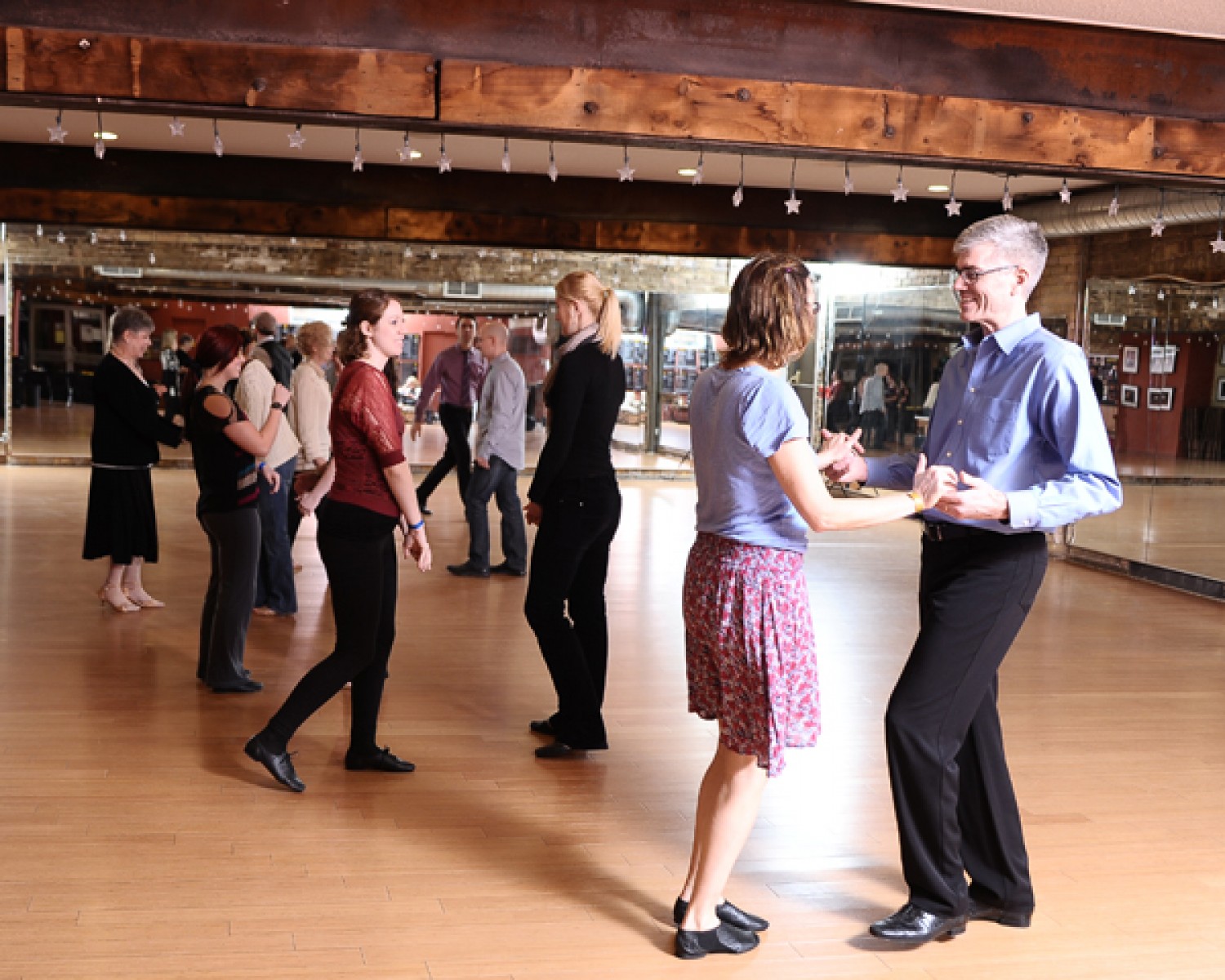The Secrets Behind the Ballroom Dance Frame

I recall my first ballroom instructor standing connected with a student, waiting impatiently for him to move. He seemed to want to go somewhere, but didn’t want to knock her over doing it. He was still getting used to what ballroom dancers call the ‘frame’.
Our frame is how we position our arms to move and create room for you and your partner to dance. It is also one of the most important elements of connecting with your partner, which is, after all, what partner dancing is all about. Here’s the secrets to holding yourself properly with any partner.
The Beach Ball VS The Hug
Think of one of those massive beach balls you see sometimes – the ones that are about 4 feet in diameter and practically knock you over if they’ve been overfilled. Imagine holding out your arms and hugging one of these monstrosities. The shape your arms make as they round forward is the space you need for smooth and standard dances.
For rhythm and Latin dances, the arms reach forward more, like you’re about to hug your partner. This gives you more room in front, so you can do all your hips, flicks, turns and taps without crippling each other.
The Spiral and the Wave Hello
Now that we have the basic arm shape, let’s distinguish between right and left. The leader’s right and follower’s left arm spirals gently downward, so if your arm was a slide, a marble could roll from the shoulder all the way to the wrist. The leader’s arm is underneath the follower’s, with his hand wrapping around her left shoulder blade, just under the armpit. Her hand locks in on his upper arm, between the bicep and the shoulder muscle.
The leader’s left and follower’s right arm are tilted upwards from the elbow, as if waving hello to each other. The hands clasp at the follower’s eye-level, with the leader’s hand making an L-shape with the thumb and 4 fingers, and the follower placing her 4 fingers inside the L.
The Tin Man
Remember the Wizard of Oz? Your arms and shoulders have to be as stuck in place as the Tin Man’s arms when they haven’t been oiled. That means wherever you face, your arms stay in front of you, the same distance from your body – and that’s where your partner will be, too!
For experienced dancers: Try not to be so stiff and tight that you are jerking each other around like marionettes. Keep just a little softness, so your arms can absorb the movement and keep it comfortable, not abrupt.
Pushing Hands, Light Elbows
Finally, every frame must be what the books refer to as ‘light and responsive’. Light means if your partner were to suddenly remove their arms, your arms wouldn’t fall. If they did, it means you are leaning on your partner – and that’s a big no-no, both for comfort and balance purposes. Picture helium balloons attached to your elbows and gently floating them in place.
As for responsive, the elbows may be light, but the hands need to put on some pressure! No, it shouldn’t feel like sumo wrestling, but each palm should put enough pressure on the other person’s frame so you both know what’s going on. More pressure is better for beginners, because it can compensate somewhat for a weaker frame.
We’ve been talking about the closed position frame, which is the most common one used in ballroom. Next time, we’ll be taking a look at the other frames used, so you can connect easily in ANY dance pattern!
Credits
About the Author
Ian Crewe has been dancing ballroom for almost 20 years, and has a Licentiate in American smooth and rhythm. His passion for dance and his endless seeking for ways to reach new audiences eventually led him to blogging and the World Wide Web. Ian currently teaches at the Joy of Dance Centre, Toronto, ON, Canada.

